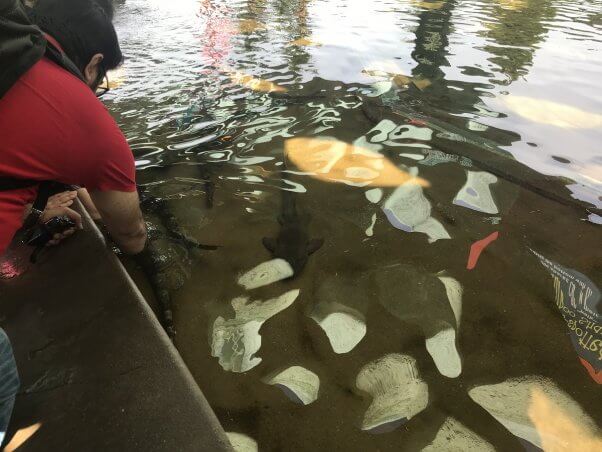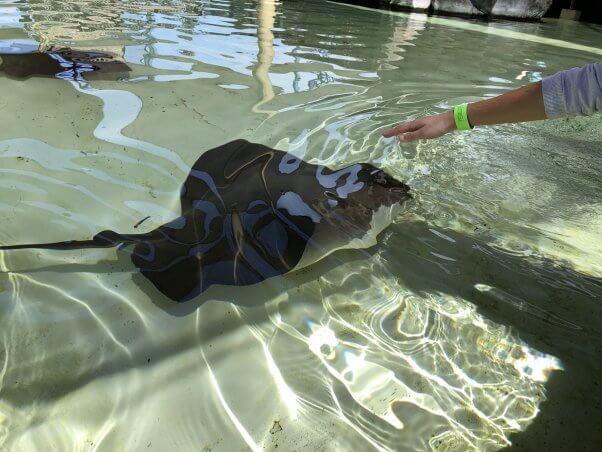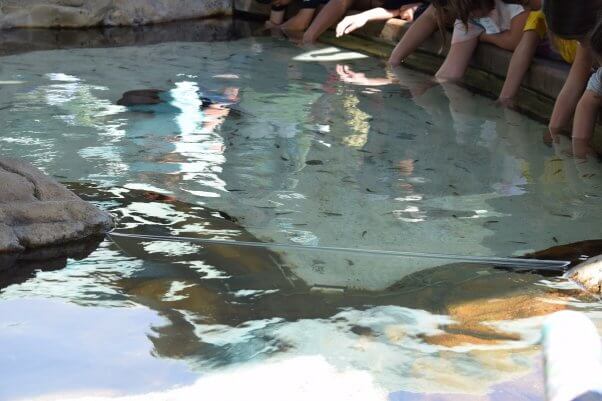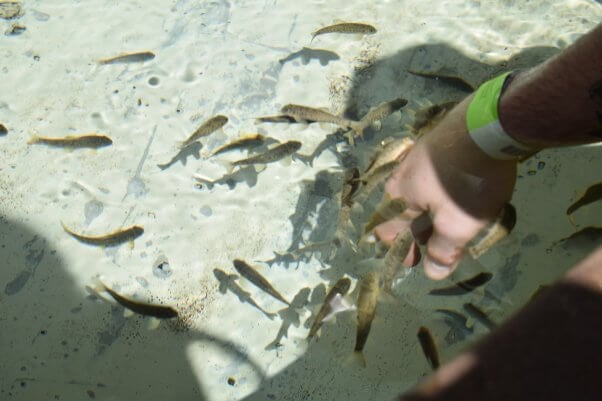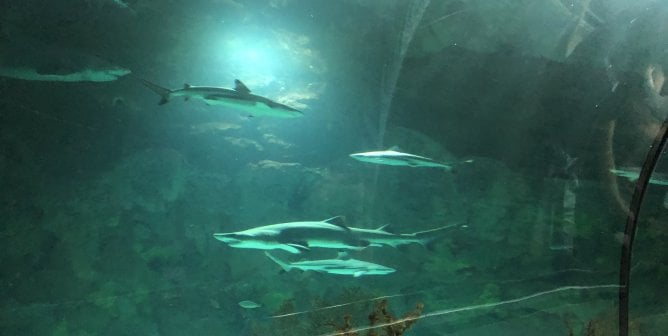Everything Wrong With Touch Tanks
“Touch tanks” are just as disgusting as they sound: small, shallow prisons that give marine animals no escape and no choice but to be grabbed, poked, and prodded by a constant barrage of human hands. No one would choose to be trapped, confused, nervous, and powerless to stop whatever an approaching stranger wants to do to them—animals included.
Suffering on Display
When animals are crammed into touch tanks at marine parks like SeaWorld, or aquariums like SeaQuest, bacteria from human hands contaminate the tank, which can be dangerous to the fish inside. Fish and rays have a natural mucous coating on their skin that protects them from parasites. Human touch can wear down that barrier, leaving them vulnerable. Their health is further compromised when they’re unable to engage in their natural behavior. In nature, they would swim freely, dive, socialize, forage, and flee or hide when they sense danger. In captivity, those choices are taken from them.
Aquatic animals used for these exhibits are often forced to spend their entire lives there, swimming in cramped laps. They’re subjected to loud noises, shouting crowds, and foreign and potentially dangerous foods, drinks, and other objects being dropped into their enclosures.
Stingrays’ barb tissue is commonly clipped every few weeks, which places them at risk for infection or greater injury.
Captive Animals Die Prematurely
Within a month of SeaQuest’s grand opening in Folsom, California, a stingray died. The animal was found dead in a touch tank by a visitor—not an employee—who noticed him or her lying lifeless, partially buried under sand. In addition, hundreds of fish died while in transport to SeaQuest Littleton in Colorado, and former employees at SeaQuest Las Vegas allege that hundreds of animals have died there.
These enclosures continually prove to be among the deadliest artificial environments for animals.
Putting Children at Risk
At SeaQuest’s Colorado location, at least 41 people have been injured by animals in less than a year, including via shark bites and a stingray barb that got stuck in an individual’s hand. Three of the reported injuries were from puffer fish, whose bite may transfer a dangerous neurotoxin that can cause numbness and difficulty breathing—symptoms that at least one visitor experienced, resulting in a call to 911. In addition, the USDA has cited the SeaQuest location in Fort Worth, Texas, for allowing members of the public to interact with an Asian small-clawed otter without an adequate barrier in place, resulting in visitors sustaining two wounds in a month.
Say ‘Thanks, but No Tanks‘
Touch tank exhibits teach children that wild animals are playthings to be handled and harassed against their will for human amusement. Please don’t purchase the tickets that keep touch tanks in business. And join PETA in asking malls across the country to stop allowing SeaQuest—an aquarium notorious for animal exploitation—at their properties.

